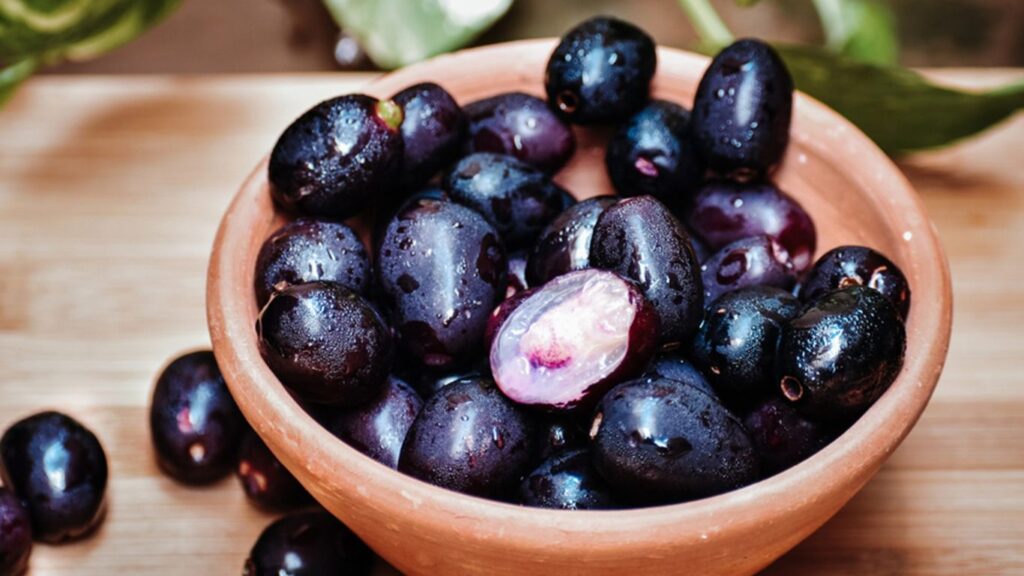Java plum, or Jamun, is a tropical fruit revered in traditional medicine for its multitude of health benefits, especially in Ayurveda where it’s used for treating diabetes. This fruit is not only delicious but also packed with nutrients that can support blood sugar control. As diabetes continues to be a global health crisis, affecting millions worldwide, there’s a growing interest in natural management strategies that can complement traditional treatments. Many people are turning to natural remedies and dietary changes to help manage their condition effectively. This blog explores the potential of Java plum as a natural aid in diabetes management. By delving into the fruit’s nutritional makeup and its historical use in traditional practices, we’ll uncover how Java plum can be integrated into daily diets to potentially stabilize blood sugar levels and offer a natural remedy for those battling diabetes.
Java Plum: A Natural Aid for Diabetes Management
Java Plum and Its Nutritional Profile
Java plum, known scientifically as Syzygium cumini, is native to the Indian subcontinent and thrives in tropical climates across South Asia, Australia, and the Philippines. This fruit is characterized by its deep purple or almost black color and a unique blend of sweet and tart flavors. Nutritionally, Java plum is a powerhouse, rich in dietary fiber, which aids in regulating blood sugar levels, and packed with antioxidants that help reduce oxidative stress. It also contains essential vitamins like vitamin C and minerals such as potassium and iron, which are vital for overall health management in diabetes patients. Significantly, Java plum includes bioactive compounds like jamboline and jambosine, which have been studied for their ability to slow down the conversion of starch into sugar, thereby helping in the management of blood sugar levels. These features make Java plum a beneficial addition to a diabetes management diet.
The Role of Java Plum in Blood Sugar Regulation
Java plum contains active compounds such as jamboline and jambosine, which play a significant role in the regulation of blood sugar levels. Jamboline specifically works by inhibiting the enzymatic conversion of starch into sugar. This means that when foods high in carbohydrates are consumed, jamboline slows down their breakdown, resulting in a more gradual release of glucose into the bloodstream. This helps in preventing sudden spikes in blood sugar levels, which are particularly dangerous for individuals with diabetes.
Additionally, jambosine is another potent compound found in Java plum that helps regulate the amount of sugar released by the liver. This regulation is crucial because the liver can release glucose into the blood, influencing blood sugar levels, especially during fasting periods or between meals.
Several studies have highlighted the efficacy of Java plum in managing blood sugar. Research has shown that diabetic patients who included Java plum in their diet experienced a significant reduction in their blood sugar levels. These studies suggest that the fruit’s properties not only help in managing immediate glucose levels but also contribute to long-term diabetes control, making Java plum a valuable natural supplement in diabetes management strategies.
Java Plum and Pancreatic Health

Java plum exerts a beneficial influence on pancreatic function, which is central to insulin production. The fruit’s antioxidants help protect pancreatic beta cells, which are responsible for insulin secretion. This protection is crucial, as it enhances the pancreas’s ability to function effectively, even under the strain of conditions like diabetes, where these cells are often compromised.
Research underscores Java plum’s protective effects against pancreatic damage. One notable study demonstrated that extracts from Java plum not only increased insulin secretion in diabetic animals but also reduced signs of pancreatic cell damage. This dual action supports both the treatment and prevention of diabetes-related pancreatic issues. By safeguarding these vital cells, Java plum helps maintain a more stable balance of insulin and glucose in the blood, offering a natural therapeutic strategy to manage and potentially mitigate diabetes progression.
Incorporating Java Plum into a Diabetic Diet
For a more varied intake, consider juicing the plums to create a refreshing drink, or blending them into smoothies with other diabetic-friendly fruits like berries and low-fat yogurt.
For culinary experiments, Java plum chutney or jam using minimal sugar substitutes can be a flavorful addition to meals. When preparing dishes, be mindful to use the fruit in moderation to ensure blood sugar levels remain controlled.
As a precaution, diabetics should start with small quantities of Java plum to monitor its effects on their blood sugar levels. Additionally, since the fruit is seasonal, consider discussing with a healthcare provider about the best ways to incorporate it into your diabetes diet plan to optimize its health benefits.

Conclusion
Java plum offers a promising natural remedy for managing diabetes, thanks to its rich nutritional profile and active compounds like jamboline and jambosine that help regulate blood sugar levels. Whether consumed fresh, as juice, or incorporated into diabetic-friendly recipes, this fruit can play a beneficial role in a holistic diabetes management plan. However, as with any dietary addition, it is essential for individuals with diabetes to consult healthcare professionals to tailor their diet effectively. Embracing Java plum can be a step toward naturally maintaining healthier blood sugar levels and enhancing overall well-being.
Also read: 8 Nutritional Benefits of Cherries with its Antioxidant Properties
